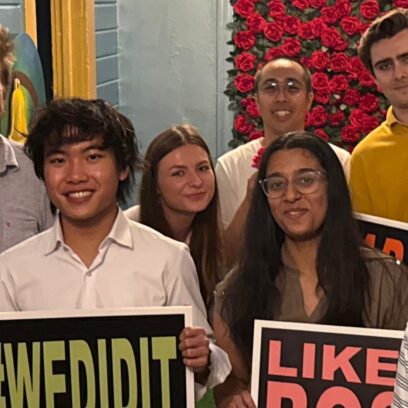Carbon Credit Lifecycle


🌍 Carbon markets can feel overwhelming—fragmented data, limited transparency, and conflicting advice make it hard to know where to start. In this webinar, our experts give a clear, practical introduction to the VCM.
An overview of how carbon credits are created, verified, and ultimately retired to support climate action goals.
A carbon credit is a tradable certificate that represents the reduction, removal, or avoidance of one metric ton of carbon dioxide equivalent (CO₂e) from the atmosphere. These credits are generated by verified climate projects (such as reforestation, restoration, renewable energy installations, methane capture systems, etc.) that actively mitigate or remove greenhouse gas emissions. By purchasing these credits, individuals and organizations can take responsibility for emissions they cannot yet eliminate, allowing them to offset their carbon footprint while supporting global climate action.
Carbon credits play a critical role in bridging the gap between current technological or economic limitations and the goal of full decarbonization. While reducing direct emissions is the ultimate priority, many sectors, including aviation, shipping, and heavy industry, face challenges that prevent their complete elimination. For most organizations and individuals, even if fully committed to decarbonization, some residual emissions are expected to remain in the near to medium term. Carbon credits provide a mechanism to address these emissions responsibly, complementing reduction efforts and accelerating the global shift to a low-carbon economy.
There are two primary markets for carbon credits:
- Compliance Markets are regulated by governments or international bodies and are designed to help countries or entities meet legally binding emissions targets. Participants are obligated by law to hold a set number of allowances or credits to match their emissions. In some systems, carbon credits can be used alongside emission allowances under specific rules.
- Voluntary Markets allow organizations, companies, and individuals to purchase carbon credits on a discretionary basis to meet climate commitments, corporate social responsibility objectives, or personal values. Voluntary credits drive private-sector funding toward climate projects that may otherwise lack financial support and give buyers flexibility in how they contribute to global emissions reduction efforts.
At CarbonBetter, we support clients throughout the complex landscape of the carbon market. Our role includes identifying high-quality credits that align with specific sustainability goals, managing procurement and due diligence, and ensuring proper retirement to uphold environmental integrity. Through end-to-end services, we make it easier for organizations to invest in climate solutions that are credible, measurable, and impactful.
The Carbon Credit Lifecycle
Carbon credits undergo a rigorous, multi-stage process to ensure they represent legitimate environmental benefits. Each step plays a critical role in maintaining the credibility and effectiveness of carbon markets.
- Project Development
The lifecycle of a carbon credit begins with developing a project aimed at reducing, removing, or avoiding greenhouse gas emissions. These projects are often implemented in regions with high emissions potential or environmental vulnerability and are designed to create real, measurable, and lasting climate benefits.
A project developer, which can be a private company, nonprofit, local government, or cooperative, identifies an opportunity to achieve emission reductions beyond a business-as-usual scenario. Developers design a comprehensive plan outlining project activities, the types of emissions being targeted, expected climate impacts, and monitoring protocols. The plan must align with a specific methodology issued by a recognized carbon standard (e.g., Verra’s Verified Carbon Standard, Gold Standard, ACR, or CAR), which governs how the project is quantified, validated, and verified.
These standards also operate carbon registries, which are online platforms that provide full transparency by tracking approved projects, credit issuance, transfers, and retirements.
Projects typically fall into the following categories:
| Nature-Based Solutions | Projects that harness the power of ecosystems to store carbon or prevent emissions. Examples include afforestation, reforestation, avoided deforestation (REDD+), soil carbon enhancement, and wetland or mangrove restoration. These projects often deliver co-benefits such as biodiversity protection and community resilience. |
| Technology-Based Solutions | Projects that use technology to reduce emissions from industrial, waste, or energy systems. These include renewable energy installations (solar, wind, hydro), industrial process emissions reductions, and emerging carbon removal methods like direct air capture. |
| Hybrid Projects | Projects which use a combination of nature based and technology to reduce emissions. Common examples include Biochar, Enhanced Rock Weathering, etc. |
To ensure that carbon credits represent real, lasting, and meaningful climate benefits, high-quality carbon offset projects are evaluated against several key criteria:
| Additionality | Emission reductions must exceed what would occur in a business-as-usual scenario. |
| Permanence | Reductions must be durable and safeguarded against future reversals. |
| Leakage | The project should not shift emissions to another area, offsetting its benefit. |
| Measurability | Reductions must be accurately quantified using standardized methodologies. |
| Verification | Independent auditors must confirm results through regular assessments. |
| Transparency | All documentation must be publicly available for stakeholder review. |
| Co-benefits | Many projects offer added value, such as improved livelihoods, better air quality, or biodiversity protection. |
Together, these criteria help ensure that carbon offset projects are not only effective at addressing climate change but also responsible, credible, and beneficial to people and ecosystems.
2. Validation and Registration
Once a project is fully designed and the developer has created a robust PDD, it must be validated to ensure compliance with its selected methodology. An accredited third-party validation body conducts a thorough review of project plans, baseline assumptions, and projected emissions reductions. Validation is a key step in safeguarding the environmental integrity of future credits.
After successful validation, the project is formally registered in the relevant carbon registry. This step publicly documents the project’s design and monitoring framework, making it traceable and accountable throughout its lifecycle.
3. Monitoring and Verification
After implementation begins, the project enters a monitoring phase. Project developers collect data on activities and outcomes over a defined reporting period. Monitoring must follow the approved methodology, capturing emissions reductions or removals accurately.
At the end of each reporting period, developers submit a Monitoring Report that quantifies the project’s climate impact. This report undergoes third-party verification, where an independent auditor assesses whether reported results are accurate and align with the methodology.
Only after successful verification can credits be issued. This rigorous oversight is essential to maintaining market credibility and preventing overstated or fraudulent claims.
4. Credit Issuance
Following verification, the relevant registry issues carbon credits to the project. Each credit is uniquely serialized and represents one metric ton of CO₂e avoided or removed. These serial numbers ensure credits are trackable, auditable, and can be confidently linked to a specific project and emission reduction period.
Credits are listed in a public database, ensuring full transparency. Issued credits may remain with the project developer or be sold to intermediaries or end buyers.
5. Credit Sale or Transfer
Carbon credits can be sold in various ways, depending on buyer preference and market sophistication:
| Direct Sales | Some buyers purchase credits directly from project developers. This method allows for strategic alignment with project goals, long-term procurement agreements, or brand storytelling. However, it typically requires substantial due diligence. |
| Through Intermediaries | Buyers may work with advisors or aggregators to identify high-quality credits that align with their sustainability targets. These intermediaries often manage contracting, quality assessment, and price negotiation. |
| Marketplaces | Online platforms such as CBL, Patch, or ClimateTrade offer marketplaces with pre-listed credits. Buyers can browse, compare, and purchase based on price, standard, project type, or geography. |
Each of these methods offers different levels of flexibility, control, and support, depending on the buyer’s goals and sophistication in the carbon market.
Carbon credits can change hands multiple times before they are ultimately retired. Throughout these transactions, registries track each transfer and update credit ownership in real-time. This transparent tracking system ensures clear ownership at every stage, prevents double-counting, and maintains the credibility of the credit.
In addition to being verified and issued, each carbon credit carries a set of attributes that influence how it’s used, valued, and tracked throughout its lifecycle. These attributes are important for buyers to understand when selecting credits that meet their climate goals and reporting needs:
| Vintage Year | Indicates the year emission reductions occurred. Newer vintages may be preferable for alignment with recent emissions. |
| Project Type | Influences relevance to buyer goals (e.g., biodiversity, energy access, innovation). |
| Standard | Affects credibility and methodology rigor. |
| Location | May influence co-benefits, community impact, or regional branding. |
| Price | Varies based on quality, demand, vintage, and co-benefits. |
| Retirement Status | Reflects whether the credit has been claimed and permanently removed from circulation. |
6. Credit Retirement
Retirement is the final step in the carbon credit lifecycle. A credit is retired when it is permanently removed from the market, ensuring it cannot be traded or claimed by another entity. This act transfers the climate benefit of the credit to the buyer, who may then declare they have offset a specific quantity of emissions.
Proper retirement ensures environmental integrity and prevents double-counting. Each retired credit is recorded in the registry with a timestamp, serial number, and the entity claiming the benefit. Retirement is essential for credible emissions reporting and forms the basis for any legitimate offsetting claim.
How CarbonBetter Supports Clients
At CarbonBetter, we partner with project developers to help bring high-integrity carbon credit projects to market efficiently and successfully. Our team provides initial project design and financial viability assessment to confirm alignment with market expectations, registry requirements, and relevant policies. We support developers in selecting the appropriate registry and crediting methodology, reviewing and refining the Project Design Document (PDD), and preparing all required documentation for validation and registration. Throughout the project lifecycle, we help ensure compliance with rigorous standards while optimizing for both impact and operational feasibility.
Beyond registration, we work closely with developers to support credit issuance and maximize the value of their credits in the marketplace. This includes managing registry processes, assisting with documentation for credit issuance, and supporting marketing and sales efforts to optimize credit pricing and reach aligned buyers. Our experience across the voluntary and compliance carbon markets, coupled with deep relationships with credit buyers, allows us to help developers unlock greater value while ensuring their projects deliver meaningful climate and community benefits.
Conclusion
The lifecycle of a carbon credit involves a comprehensive, multi-step process—from project design to final retirement—designed to ensure that each credit represents a credible, traceable, and verifiable climate benefit. Every stage, from initial project validation to third-party verification, credit issuance, transfer, and retirement, contributes to the environmental and market integrity of the credit.
For credits to deliver real impact, thoughtful sourcing and proper retirement are essential. Buyers must consider attributes such as additionality, permanence, and vintage when evaluating credits and ensure that all transactions and claims are transparently recorded in a recognized registry.
At CarbonBetter, we help clients turn climate ambition into action through credible, high-integrity carbon credit solutions. If you are interested in purchasing, retiring, or evaluating carbon credits to meet your sustainability goals, contact us to learn how we can support your journey toward a low-carbon future.
A carbon credit is a certificate representing the reduction or removal of one metric ton of CO₂e from the atmosphere. By purchasing carbon credits, organizations and individuals can take responsibility for their unavoidable emissions, supporting verified projects like reforestation, renewable energy, and methane capture to help fight climate change.
Carbon credits go through a rigorous process that includes project design, third-party validation, continuous monitoring, and independent verification. All credits are tracked in public registries, ensuring transparency and preventing double-counting. This process guarantees that credits deliver measurable, lasting climate benefits.
Compliance markets are regulated by governments and help companies meet legal emissions targets. Voluntary markets allow businesses and individuals to buy carbon credits as part of their climate goals, even when not legally required. Voluntary markets help fund climate projects that might not get support otherwise.
Once a buyer uses a carbon credit to offset emissions, it is retired, meaning it’s permanently removed from the market and can’t be resold. Retirement is recorded in a public registry, providing clear proof that the emissions reduction has been claimed.
Carbon credits come from a variety of projects, including nature-based solutions like reforestation, technology-based solutions like renewable energy, and hybrid approaches like biochar. These projects must meet strict standards for additionality, permanence, and verification, ensuring they create real environmental impact.

About the Author
Laura Salazar is a Carbon Markets Expert on CarbonBetter’s Climate Services team. She supports early-stage project development and facilitates carbon credit transactions to help companies meet their climate goals. She holds a BEng in Environmental Engineering from EIA University in Colombia and a technical degree in Biotechnology from UCO University.

Pankaj Tanwar is Managing Director of Climate Services at CarbonBetter. He has experience leading Fortune 100 companies through their sustainability journeys, including sustainability driven growth in the food industry. Pankaj holds an MBA from Northwestern University’s Kellogg School of Management and a BTech in Mechanical Engineering from the Indian Institute of Technology, Kanpur.


